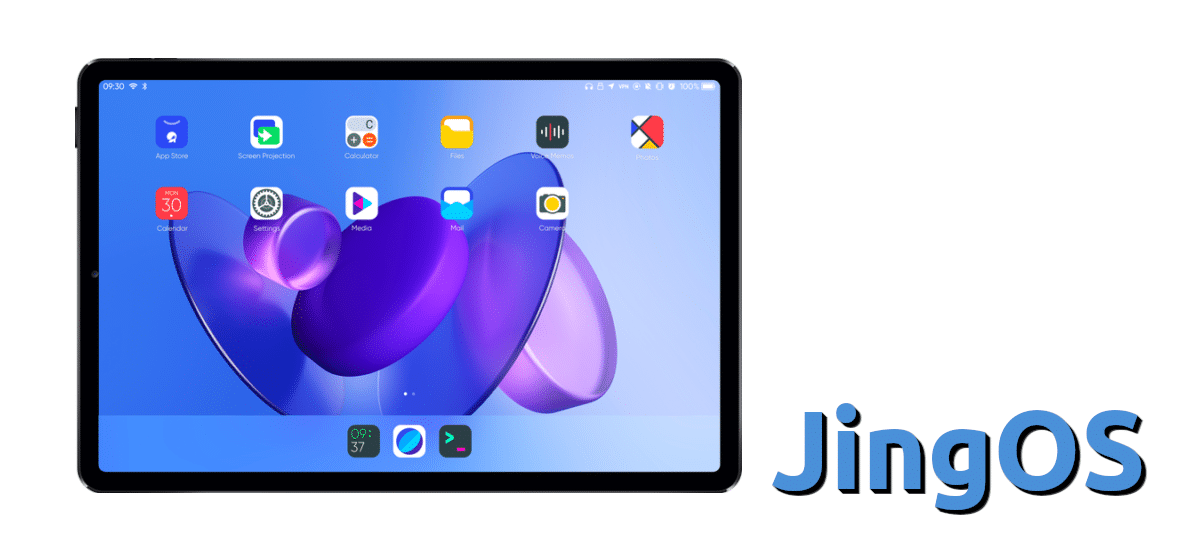
At the beginning of the year it became known JingOS. It is an operating system that at first seems designed for mobile devices, but it can also be tested and installed on computers. At the moment it can be tested on x86 computers, but to download the ISO we have to go to download website and provide an email to give us the link. I think it is something not to do if we have a PineTab and do not want to get impatient.
Although they are working on it, right now there is no ARM version, which means it cannot be installed on the PINE64 tablet. But he will be able, and if everything goes as before, he can be the one who takes the cat to the water. It is a real possibility because JingOS is based on Ubuntu 20.04 and uses its own version of Plasma Mobile, the same environment that Manjaro uses, but the developers of this operating system are focusing on landscape screens.
JingOS can be tested and installed on x86 machines now
The best way to test it for those of us who do not have an x86 tablet or computer is with GNOME Boxes. Those of you who still have an x86 PC can run it on a Live USB, and even install it, but it is not the same for those of us who have a newer computer. I have, and it is clear that it is not exactly the same, but it is enough to awaken my desire to try it on the PineTab and believe that it will be the system I will use in the future.
JingOS is based on Ubuntu, and the graphical environment it uses is a custom Plasma Mobile. The operating system includes its own Calendar, Voice Notes, Files, Photos and Calculator applications, among others, and has WPS Office installed by default, something that I have not been able to test because it did not let me accept the terms. And it is that in v0.8.1, the desktop applications do not go quite well; it's hard to be precise with the mouse, but I have to remember that I i have tested it on a virtual machine.
Modified Plasma Mobile
About Plasma MobileWhen opening the windows we see the same as in the KDE editions of Manjaro or postmarketOS, for example: the application opens with a colored background, but in JingOS it does not open directly in full screen. The interface is in English, but that is the responsibility of KDE, which at the moment does not allow adding language packs. Multitasking, like the entire interface, is similar to that of iPadOS, and if I have not launched the gesture it is because it cannot be done in GNOME Boxes (I do not know if it can be done in an x86 PC because I do not have it).
Regarding its performance, it seems that everything works smoothly, although I have to say that I have left 3GB of RAM to the virtual machine and that I have been closing the applications (alt + F4) instead of leaving them in the background.
For the one who is wondering when there will be ARM version, only known to be working on it and that there is a group that is testing it.